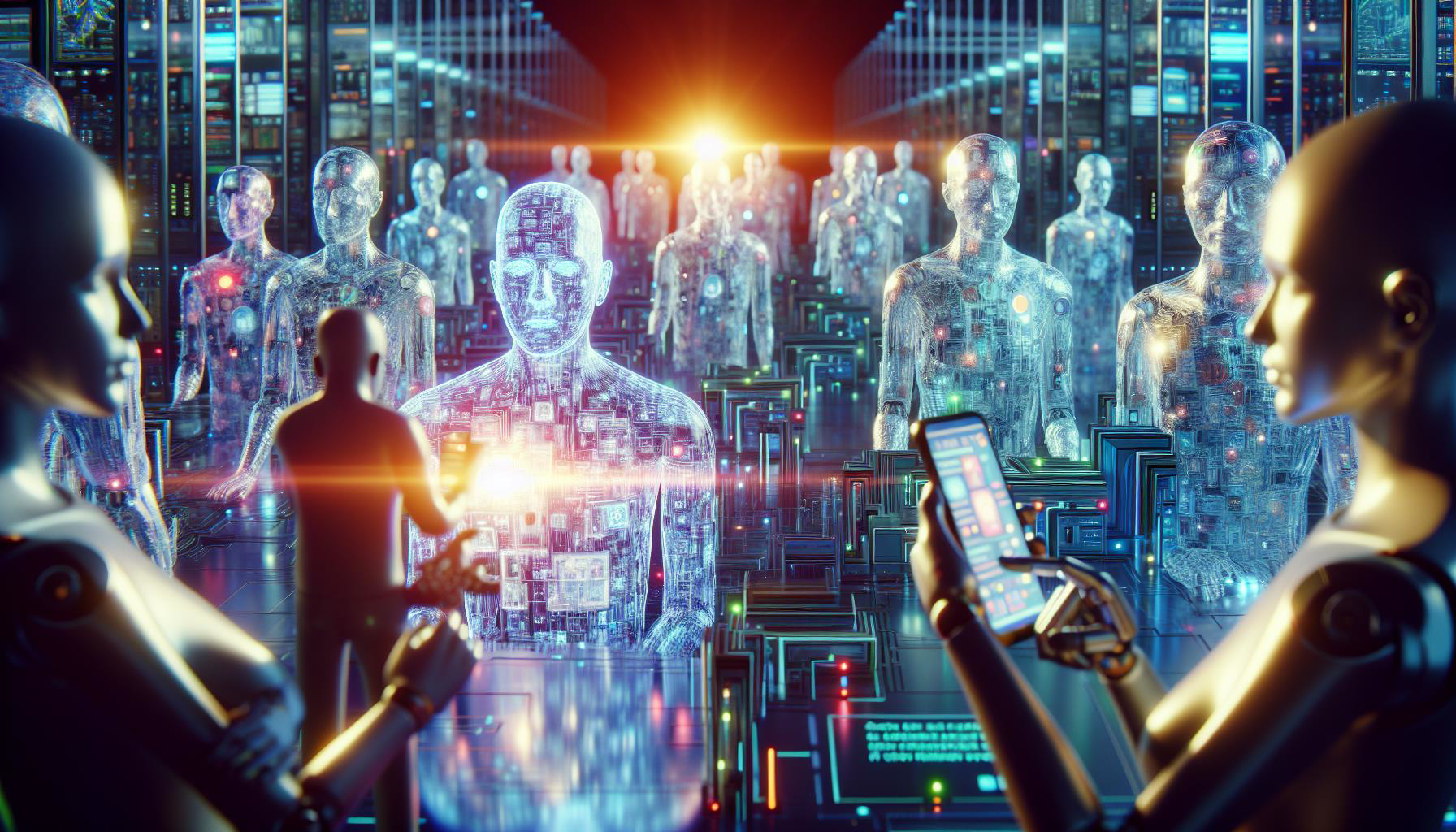The advent of artificial intelligence has brought forth numerous innovations, one of which is the creation of “deadbots.” These digital avatars allow users to hold text and voice conversations with deceased loved ones, mimicking their speech patterns and personalities. While this technology offers a sense of continued presence, it has also raised significant ethical concerns.
Technological Advancements in AI
AI-driven deadbots are designed to simulate conversations with deceased individuals by analyzing their digital footprints, including social media posts, emails, and other forms of communication. This technology aims to provide comfort to those grieving by allowing them to interact with a digital representation of their lost loved ones.
However, the University of Cambridge researchers have raised alarms about the potential psychological impact of these interactions. They argue that while deadbots might offer temporary solace, they could also lead to long-term emotional and mental health issues.
Ethical Concerns and Psychological Impact
One of the primary ethical concerns is the potential for deadbots to create an unhealthy attachment to the past. By continuously interacting with a digital version of a deceased loved one, individuals may find it challenging to move on and accept their loss. This prolonged attachment could hinder the natural grieving process and lead to psychological issues such as depression and anxiety.
Moreover, there is a risk that these AI-driven bots could be misused. For instance, companies might exploit deadbots to advertise products or services, manipulating users by leveraging the emotional connection they have with the deceased. This raises questions about consent and the ethical boundaries of using AI in such a sensitive context.
Guidelines and Responsible Use
To address these concerns, researchers at the University of Cambridge are calling for the establishment of guidelines to ensure the responsible use of deadbots. These guidelines should include measures to protect users from potential psychological harm and prevent the misuse of the technology for commercial purposes.
Additionally, there should be clear consent protocols for individuals who wish to be virtually re-created after their death. This includes informing them about the potential risks and ensuring that their digital legacy is handled with respect and dignity.
Temporary Aid or Long-Term Solution?
While some experts believe that deadbots can serve as a temporary aid to help individuals cope with grief, they caution against relying on them as a long-term solution. The technology should be used sparingly and with the understanding that it is not a substitute for human interaction and emotional support.
In this regard, mental health professionals should be involved in the development and deployment of deadbots to ensure that they are used in a manner that supports the grieving process without causing additional harm.
Public Perception and Acceptance
The public’s perception of deadbots is mixed. While some see the technology as a valuable tool for coping with loss, others view it as a disturbing and unnatural way to deal with grief. This divide highlights the need for ongoing dialogue and education about the ethical implications and potential risks associated with deadbots.
As society grapples with these issues, it is crucial to consider the broader impact of AI on our emotional and psychological well-being. The development of deadbots should be guided by ethical principles that prioritize the mental health and dignity of users.
Future Directions and Research
Future research should focus on understanding the long-term effects of interacting with deadbots and identifying best practices for their use. This includes studying the psychological impact on different demographics and exploring ways to mitigate potential harm.
Furthermore, interdisciplinary collaboration between AI developers, ethicists, and mental health professionals is essential to create a framework that ensures the responsible and ethical use of deadbots. This collaborative approach can help balance the benefits of the technology with the need to protect users from potential risks.
Conclusion
The emergence of AI-driven deadbots presents both opportunities and challenges. While they offer a novel way to cope with grief, they also raise significant ethical and psychological concerns. It is imperative to approach this technology with caution and establish guidelines that ensure its responsible use.
By prioritizing the mental health and well-being of users, we can harness the potential of deadbots in a manner that respects the dignity of the deceased and supports those who are grieving. Ongoing research and dialogue will be crucial in navigating the complex ethical landscape of this emerging technology.
References
Cambridge Experts Warn: AI “Deadbots” Could Digitally “Haunt” Loved Ones from Beyond the Grave
Ghostbots: AI versions of deceased loved ones could be a serious threat to mental health
‘Deadbots’ can speak for you after your death. Is that ethical?
Commentary: Should we use artificial intelligence to recreate our deceased loved ones?
Scientists warn AI ‘griefbots’ could HAUNT you
